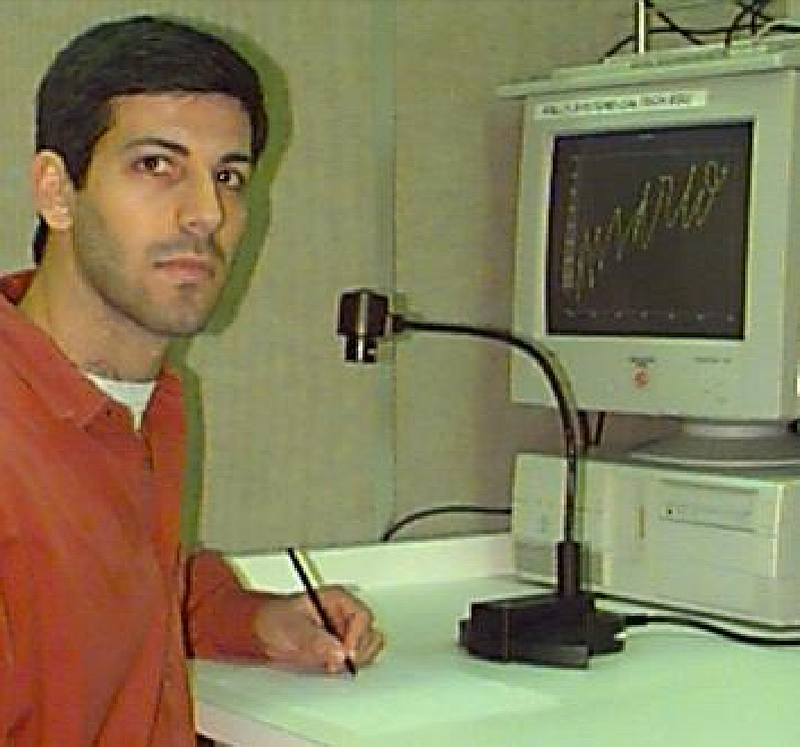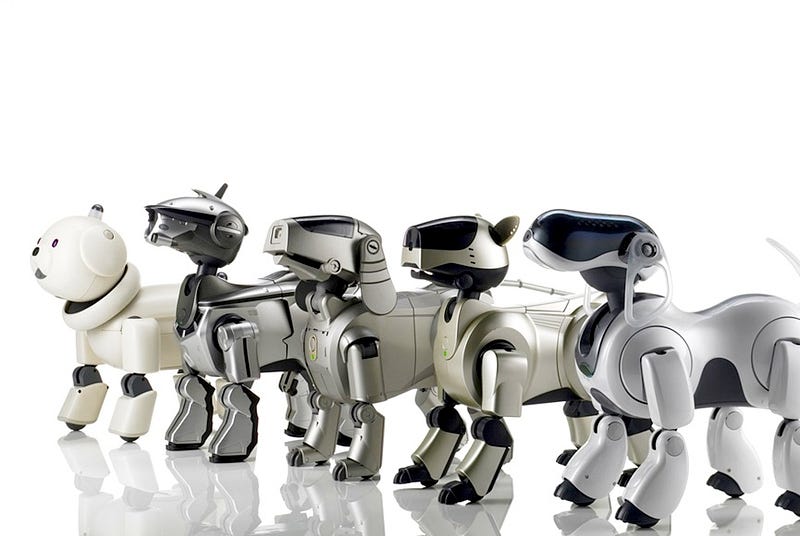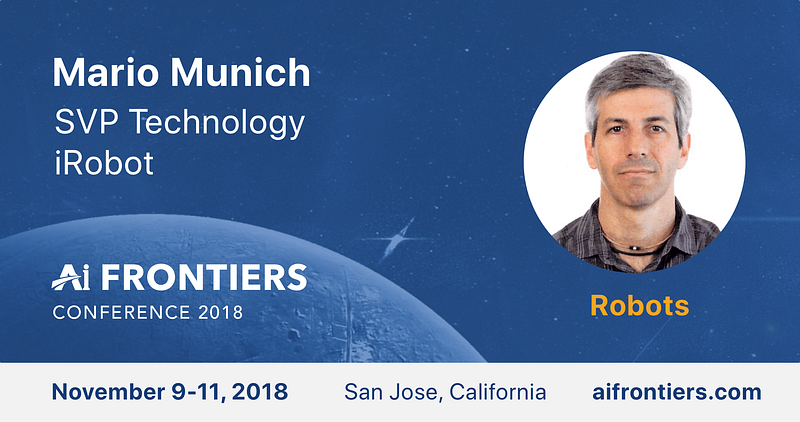Bringing Robots to Homes: Mario Munich’s Story

Last month Sony re-launched its AIBO robot dog, which took Mario Munich on a trip down memory lane: It seems not that long ago, in a research project he was involved, that he coded speech recognition and object detection into an AIBO. That was early 2000 before Sony discontinued AIBO in 2006.
Today Munich is the senior vice president of iRobot, a global consumer robot company whose vacuum cleaning robot Roomba has become a household name. The grey-haired robotic expert, Munich is a firm believer of the robotic age: “Robots have tremendous potential for extending the independence of a growing elder population, allowing people to stay in their homes longer and have increased access to care.”
From Computer Vision to Speech Recognition
Born in Argentina and received his undergraduate education there, Munich came to States to study at Caltech and got his Ph.D. in Electrical Engineering in 2000. His Ph.D. thesis introduced a computer interface that captures handwriting with a camera: A user was allowed to write at will on a regular piece of paper with a pen while the handwritten text was being obtained. With this, Munich further developed a personal identification system using signatures. He used a minimal number of training examples and delivered a relatively robust recognition and verification system. The performance of the system was comparable to the best performances of camera-based identification systems present in the literature.

After his graduation, Munich joined VocalPoint Technologies, where he was involved in the development of robust speech recognition algorithms for telephony. At that time, speech recognition engines always failed to recognize out-of-dictionary words, so his team came up with a method of identifying characters.
Evolution Robotics
Munich later joined Evolution Robotics, which specializes in robotics technologies ranged from computer vision to localization and autonomous navigation. He was leading the human-robot interaction group.
The design of the human-computer interaction (HCI) is vital for creating an exciting and engaging relationship between humans and robots. A primary goal of computer engineering is to better immerse computers in everyday human activities, so that computer technology may improve the inter-relation among humans, machines, and the environment.
At Evolution Robotics, Munich worked on object recognition, mapping and navigation algorithms. He also developed human-robot interaction systems based on vision and speech, such as a novel interaction mode for the Sony AIBO robot that is based on a very efficient and robust visual pattern recognition system that was ported (and optimized) from a Pentium-class CPU to an embedded platform.

The earlier versions of AIBO
The Pioneer of Visual SLAM
SLAM is an abbreviation for Simultaneous Localization and Mapping, which is a technique for estimating sensor motion and reconstructing structure in an unknown environment. Since 2005, visual SLAM started raising much attention amongst the computer vision community. The method uses primarily visual (camera) sensors because of the increasing ubiquity of cameras such as those in mobile devices.
Behind the pioneering visual SLAM research was Munich. In 2005, Munich and six researchers from CalTech published the paper The vSLAM Algorithm for Robust Localization and Mapping, which presents a novel approach to enable low-cost navigation in cluttered and populated environments.
With visual SLAM, robots can dynamically build a map while keeping track of its position. It can be used as a fundamental technology for various types of applications and has been discussed in the field of computer vision, augmented reality, and robotics.
Munich’s invention laid the groundwork for Evolution Robotics’ flagship floor-cleaning robot Mint, which was introduced in 2010. Two years later, its rival iRobot made an acquisition of Evolution Robotics with $74 million. The deal added the lightweight Mint into the iRobot Roomba line, and most importantly, brought the visual navigation and SLAM technologies in future iRobot products. iRobot retained the whole team, including Munich. He was appointed as the vice president of advanced development and then became the SVP Technology in 2015.
iRobot
In 2015, iRobot launched its first-ever vision-enabled consumer robot Roomba 980, dubbed by the CEO as “the most important robot that iRobot has launched since the original Roomba.” The robot can autonomously go through the house, create an in-house map, and cover every single place. Roomba’s camera takes pictures, and its inside visual SLAM-enabled software can look for the distinctive patterns in that picture.

Roomba 980
Today, valued at almost $3 billion, iRobot is leading the global consumer robot market, and its Roomba line has more than 60 percent market share in the robot vacuum cleaning category.
Almost all robotic problems require a practical way to incorporate highly complex computer vision technologies to cost-effective consumer robotics applications, and this has become Munich’s lifelong goal — embedding computer vision in everyday life.

Mario Munich will speak at AI Frontiers Conference on Nov 9, 2018 in San Jose, California.
AI Frontiers Conference brings together AI thought leaders to showcase cutting-edge research and products. This year, our speakers include: Ilya Sutskever (Founder of OpenAI), Jay Yagnik (VP of Google AI), Kai-Fu Lee(CEO of Sinovation), Mario Munich (SVP of iRobot), Quoc Le (Google Brian), Pieter Abbeel (Professor of UC Berkeley) and more.
Buy tickets at aifrontiers.com. For question and media inquiry, please contact: info@aifrontiers.com




